Add Fields to the Results Table in Easy Mode
You can add fields (columns) manually to the results table in Easy Mode by using the Add Fields automation.
- Create a new playbook in Easy Mode or edit an existing one.
- In the playbook editor, hover over the parent step and click +.
- Under ‘What do you want to automate?’, search for and select the Add Fields automation. Or find Add Fields under Transform Data.
- Enter a name for the field that you want to add to the results table.
- For the value of the field, specify a function, a field, or a constant. Follow the guidelines in 'Adding field values to the results table' in this topic.
- After specifying the function, click Submit to return to the playbook editor.
Add Field Values to the Results Table
LogicHub supports adding fields, function expressions, and static values as columns in the results table. These options are available for the add fields automation and other automations such as integrations. When adding the automation, you are prompted to enter a field (column) name and then specify a value.
Follow these guidelines when specifying the value:
- To add a function or expression, enter
=and select Functions, or click in the Value entry area and select Enter Expresssion. Scroll through the list of functions or start typing the function name. When you select a function, the syntax is shown along with an example that you can copy and modify.
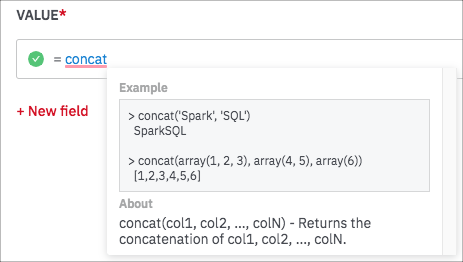
- To add a field as a function argument in a function, enter
$.and select from the available fields from the parent step.
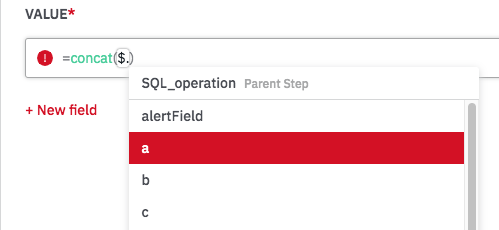
When you save the settings, the function is applied and reported in the results table.

- To add a field by itself (not as a function argument), enter
=$.or enter=and select Fields. Then
select from the available fields.

- To add a constant, enter the constant value. The system automatically adds double quotes to identify the value as a constant.
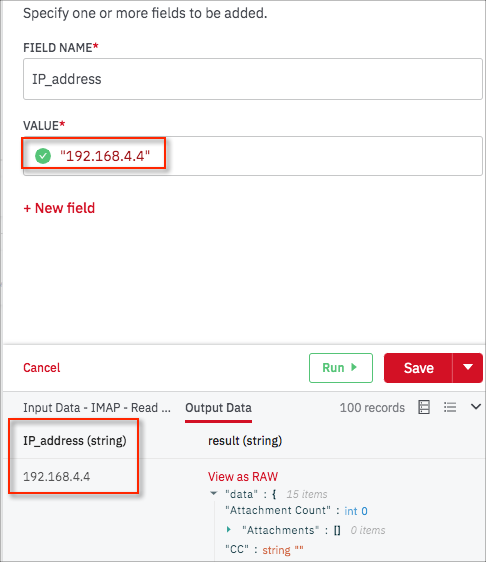
Access Nested Fields and Inline Expressions in Steps
To simplify the transformation and extraction of data from a playbook step, LogicHub provides access to nested fields and inline expressions when specifying fields for the results table.
For example, for the IMAP - Read Emails automation, most of the email content is in the result field, which is stored in JSON format. That field has nested information that you might want to extract in a separate column.
This results table shows the nested Subject field.

To expose that field as its own column, you can add a field email_subject with the value =$.result.Subject. Enter =$. and then navigate through the nested menu to find the value to select.
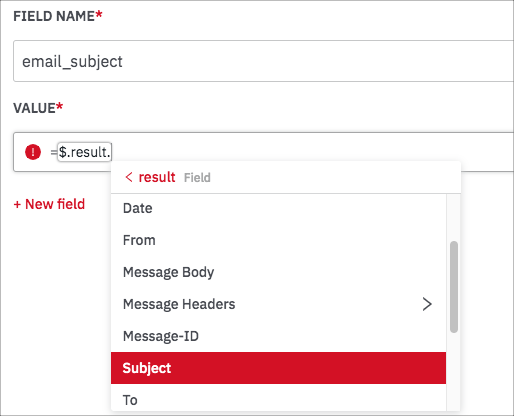
The resulting value is specified as follows.
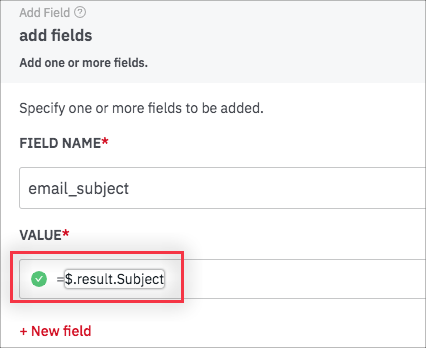
The new field is exposed in the results table.
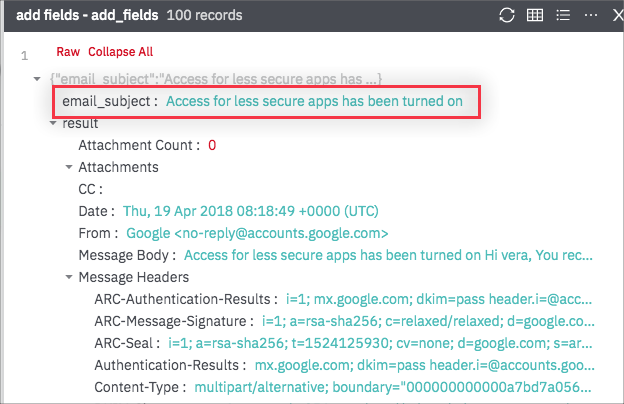
Updated about 2 years ago